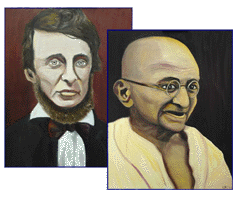"The whole aim of practical politics is to keep the populace alarmed (and hence clamorous to be led to safety) by menacing it with an endless series of hobgoblins, all of them imaginary." ~ H.L. Mencken
Aftermath: Day 2, the War With Iran
In the first fierce day of war, when coordinated air strikes on Iranian targets destroyed most of the Iranian air force and navy, the US military appeared invincible again. Wrecking a second-rate military power does that for an imperial war machine.
By the second day of the war, however, most American and Iranian citizens wished for peace. Unfortunately, wars are always easier to get into than out of. While the war planners in the Pentagon and Israel had devised a workable plan to force Iran into war, using a fake attack on US warships by Iranian gunboats (as the faked Tonkin Gulf attack initiated the Vietnam War), the US Navy fared far worse than the planners wished.
In 1987-88, during the First US-Iran Gulf war, the combined US Navy, Navy Seals, Marines and Army copters easily destroyed the navy of Iran in a single day. Yet Iranian gunboats continued to harass US shipping in that undeclared war, culminating in the USS Vincennes shooting down an unarmed Iranian jumbo jet while in Iran water.
Nearly 20 years later, after being armed with Russian and Chinese weapons, the Iranian defensive forces proved far more capable than the civilian wizards at the Pentagon predicted. Before the war, the chief of Iran's Revolutionary Guards, General Yahya Rahim Safavi, said the advanced missile system served 'to show our deterrent and defensive power to trans-regional enemies, and we hope they will understand the message.'
By the second day, the message became clearer: Iran was no longer the pushover of years past. The combined effect of Sunburn, Exocet and Yakhonts missiles striking several US Navy ships fleeing the fishbowl of the Persian Gulf was an unforgettable sight. So unforgettable that CNN and Fox chose not to show them.
According to Mark Gaffney: 'At the time of the Falklands war the Argentine air force possessed only five Exocets, yet managed to sink two ships. With enough of them, the Argentineans might have sunk the entire British fleet, and won the war.'
By contrast, the Iranians, cognizant of their defeat at the hands of the Iraqi and US forces in 1987-88, aware of the twin threat from Israel and the US, had focused heavily on defensive weaponry, supplied to them by Russian and Chinese manufacturers.
'The Russian SS-N-22.Sunburn (Moskit), which technical journals and experts have termed the most effective and lethal anti-ship weapon extant, is far cheaper to produce than a fighter plane or a missile destroyer, cruiser or aircraft carrier,' wrote Gaffney before the war. To make matters worse for US Navymen, the Russians provided the SS-NX-26 Yakhonts anti-ship missiles to Iran, reported to possess Mach 2.9 speed and a range of 180 miles.
The width of the Persian Gulf? 100-180 miles.
The immediate closure of the Persian Gulf to oil tankers from six nations provided a huge boost to peace advocates. By the second day of the war with Iran, with US Navy ships ablaze and sinking, with dire forecasts of worldwide fuel shortages, with gas prices spiking at $10 a gallon in some places, with increasing calls for impeachment appearing in the mainstream media, with environmentalist decrying the spread of radiation from the bomb blasted atomic sites in Iran, suddenly the neocon-sponsored war with Iran no longer seemed like such a good idea.
Despite the claimed success of the pre-emptive attack on Iran, despite the round-the-clock appearances of neocons on most US news channels, the fallout from the war, both in Iran and America, had become exceedingly toxic.
By the middle of the second day, with reports of missile strikes on the Green Zone, the media spin became harder to control. The glorious flag-waving patriotism that followed 911 and the approach of the Iraq War never materialized. Along the smalltown streets of America, fewer folks unfurled a flag. Instead, lines of panicked motorists, faces stricken by the new reality of another war, a war they had chosen to ignore for so long, unfurled into every gas station in America as a frightened mob. Most rushed to the pumps with a single thought in mind: I am going to fill my SUV to the top and woe be to anyone who tries to stop me.
Predictably the price of platinum, gold and silver rose. Gold topped $1000 an ounce while silver, the poor man's gold, approached $50. Predictably, the US dollar fell, as nations as diverse as China and Kuwait began dumping greenbacks for gold. Predictably, most stocks not related to war industries tumbled. Housing starts dipped and sales dried up.
And all because of an ill-conceived war designed by a few Israel-centric US leaders with lots to gain and little to lose.
The retaliatory strikes by US carrier-based fighter planes that struck the Iranian oil platforms along Bandar Abbas and left them ablaze never appeared on American television. Likewise the attacks on civilian infrastructure in Iran by Israeli and US warplanes. These were purely punitive attacks by US Navy fliers in revenge for ship losses in the Persian Gulf. The war with Iran had become a retaliatory war, a war of attrition, by the second day.
Yet throughout the Middle East, the television coverage by Al Jazeera of bomb damage to bridges, waterworks, power stations and oil platforms--not to mention schools, mosques and houses---only served to drive a wider wedge between US and their few remaining Islamic and European allies.
Throughout the first week, while US and Israeli fighter bombers attacked Iran at will, suffering an occasional loss, Iranian missiles rained down on US troops huddled in semi-permanent bases in Iraq. Resistance in Iraq grew as the war with Iran waxed and waned and US casualties rose.
Meanwhile another sort of war raged at home, another unexpected resistance. The American public, too long acquiescent, took to the streets, took to campuses, courthouses and public squares, loud, outrageous and strong. Uncivil disobedience, a public strength the powerful always feared, had returned to America three decades later.
The White House threatened to mobilize troops to handle dissidents at home, but Keith Olbermann asked President Bush: 'Sir, from where do you intend to get those troops?'
Public support for the Iraq and Iran wars and support for the Bush administration fell to record lows. In Congress, the docile, do-nothing Democrats proved less adversarial than the tougher Republicans. But in the streets, where the fate of any nation thrives or dies, the spirit of Americans grew angrier and angrier. For each spike in crude prices, each report of new losses, each report of new atrocities inflicted on Iran, the calls for a change became cruder and more violent.
The first to fall, surprisingly, was Iranian President Mahmoud Ahmadinejad. The Imams, wielding real power in Iran, disapproved of the increasingly bellicose stance of Ahmadinejad and the destruction of the war, forcing his resignation.
Later in the week, calls for the impeachment of George Bush forced a brokered peace deal and a hurried vote by the House of Representatives passing articles of impeachment by an overwhelming majority.
The US Senate, under as much fire as the troops in Iraq, dragged their feet but the words 'High Crimes' began to filter into their brains by the end of the first week of the war.
The second week of the war promised many more surprises. See Encore: Iran - A Bridge Too Far?








 Reprint Rights
Reprint Rights